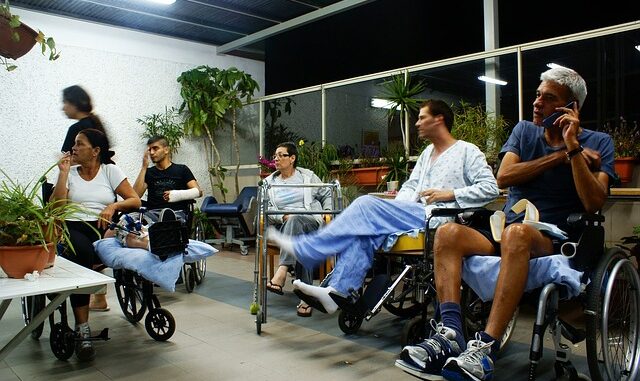
Summary
This article explores the benefits of assisted walking exercises for chronic dependent ambulatory stroke survivors. We delve into current research and studies highlighting the positive impact on motor recovery, functional improvement, and overall quality of life. Join us as we discuss the future of stroke rehabilitation and the potential of assisted walking exercises to transform lives.
** Main Story**
Walking On: Stroke Recovery
Having a stroke is, let’s face it, a life-altering event. It often leaves people with physical limitations that significantly impact their everyday lives. One of the biggest challenges – and a central focus of recovery – is regaining mobility and independence. That’s where assisted walking exercises come in. They’ve emerged as a really promising intervention for stroke survivors who are still dependent on assistance for walking. So, let’s dive into the current research and growing evidence that supports how effective these programs can be, offering real hope for continued motor recovery and functional improvement.
The Power of Assisted Walking
Assisted walking exercise programs? Think of them as a structured approach to rehab, carefully tailored to fit the unique needs of each person. Usually, these programs involve different kinds of support. We’re talking body-weight support systems, treadmills, even robotic devices, or just good old-fashioned therapist assistance. It’s all about creating a safe, controlled space where stroke survivors can practice walking. You gradually build their strength, endurance, and balance, and it works!
What are the Benefits of Assisted Walking Exercises?
Here’s the breakdown, nice and clear:
- Improved Motor Recovery: Assisted walking fires up the nervous system. And as a result neuroplasticity is promoted. This helps the brain relearn those motor skills. It’s like rewiring a circuit! Practicing walking over and over helps the brain create new neural pathways. Which means better muscle control and coordination. Now, that’s progress!
- Enhanced Functional Improvement: The benefits you gain from assisted walking don’t just stay in the gym. No way. They translate directly into being able to do more. Survivors often find they can walk faster and further, their balance is better, and they’re just more independent in their daily lives. Getting dressed, showering, moving around the house… these things become easier, more manageable. A friend of mine, actually, after suffering a stroke, couldn’t even stand up unassisted. After months of assisted walking therapy, he’s back to gardening – something he thought he’d never do again.
- Increased Quality of Life: This, in my opinion, is where the real magic happens. Regaining mobility and independence makes a huge difference in a stroke survivor’s quality of life. Assisted walking can really cut down on those feelings of isolation and dependency, and really increases self-confidence. Allowing individuals to get back out there, participate more fully in their communities and social lives. Because what’s life without connection, right?
Current Research and Future Directions
Research into assisted walking exercises for stroke survivors who need walking assistance is still underway. Studies consistently show positive results. A recent review of seven studies – that involved 91 participants – concluded that assisted walking exercises are not only feasible but can trigger continued motor recovery and functional improvement. The need for even larger, high-quality randomized controlled trials. So, there’s still work to be done in establishing standardized protocols for these programs. One thing is for sure, it shows a lot of promise.
Beyond the Physical: Emotional and Cognitive Benefits
Don’t underestimate the impact! Because while the physical benefits of assisted walking are clear, the boost to emotional and cognitive well-being is just as vital. Regular physical activity can ease symptoms of depression and anxiety, improve mood, and sharpen cognitive functions like memory and attention. You know, the sense of achievement and greater self-belief that come from assisted walking can lead to a more positive outlook and, ultimately, a better overall sense of well-being.
A Glimpse into the Future
The future’s looking bright! As technology gets better and research continues, the future of assisted walking exercises for stroke rehabilitation has huge potential. New gadgets, robotic exoskeletons, and virtual reality systems are offering exciting possibilities for creating personalized and engaging rehab programs. I wonder, could this be how we get people back on their feet faster, better, stronger? And that… that would be something. These advancements hold the potential to boost motor recovery further, improve functional outcomes, and completely transform the lives of stroke survivors. And I for one, can’t wait to see what’s next.


Beyond motor and functional improvements, what standardized metrics are used to objectively assess the “increased quality of life” reported by stroke survivors undergoing assisted walking exercises, and how do these metrics account for individual variations in pre-stroke lifestyles and expectations?